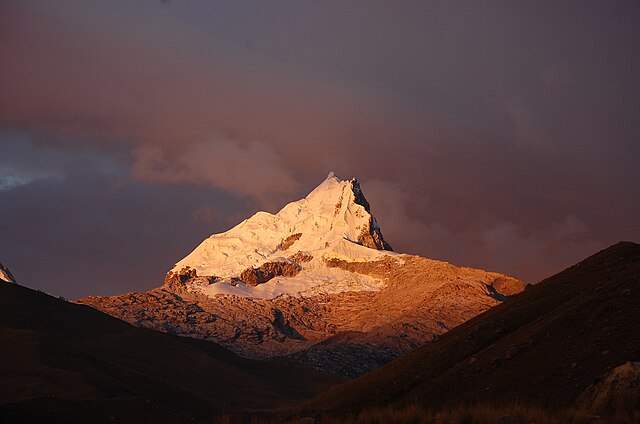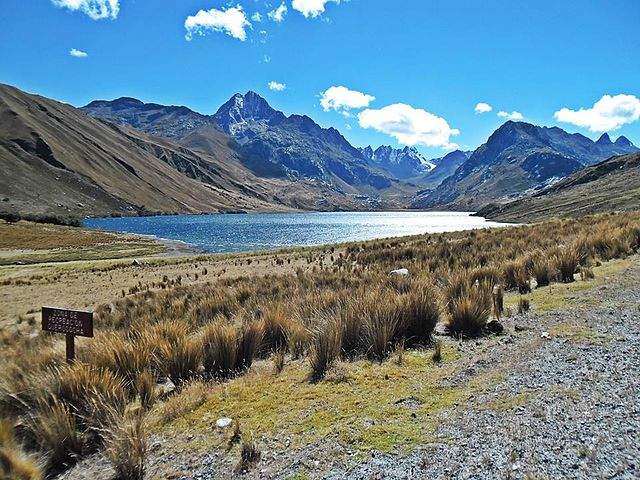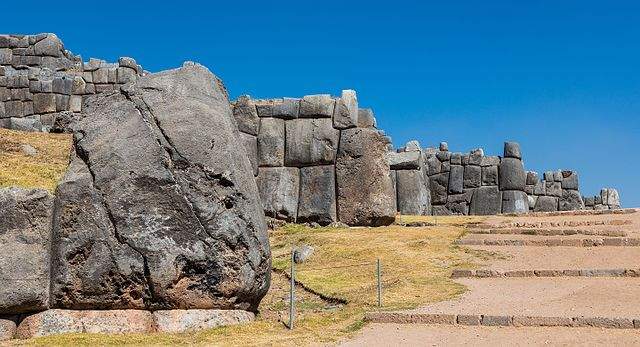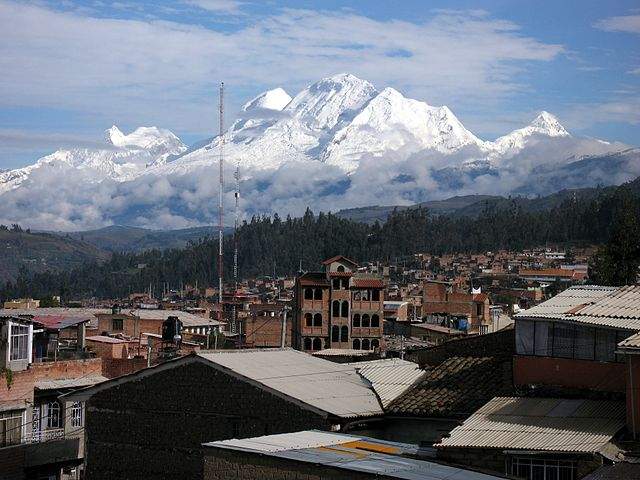Peru is a country of breathtaking landscapes, rich history, and vibrant cultures. In addition, two of its standout cities, Huaraz and Cusco, offer unique travel experiences. This guide will lead you through the must-visit sites and hidden gems that make Huaraz and Cusco unforgettable destinations.
We all have been reading about Machu Picchu in Peru, why it is rated as one of the world’s wonders, and why it should be on everyone’s holiday destinations’ bucket list.
While admitting the importance of Machu Picchu, I believe the tourists are missing out on two other extraordinary cities in Peru if they only go to Machu Picchu and spend a day in Lima, Peru’s capital, and return.
In this post, I will briefly introduce Huaraz, and Cusco, the two cities in Peru where we have so much to see and do.
Essential Places to Visit in Huaraz and Cusco for an Unforgettable Trip
How many of you know where exactly Peru is? Can you visualize its location on a map of South America, where the country of Peru is located?
Ok, here is the map of South America by the World Atlas; easily trace your fingers to the northwest region of South America to see Peru.
Let us first pick Huaraz city, learn about its location, how to reach Huaraz, and get to know what to see in the city.
Location of Huaraz in Peru:
Yes, it is clearly, and easily seen, north of Lima. Huaraz is abutting the South Pacific Ocean.
How to reach Huaraz?
The distance from Lima is roughly 400 km.
At the time of composing this travel guide (end of October 2024), there is only the road route option from Lima.
You can fly up to Lima from wherever you are and rent a car from Lima. You can cover the 400 km distance in about 5 and ½ hours!
Soon, a domestic airport will be functional in Huaraz and is expected to be serviced by flights from Lima.

When is the best period to go to Huaraz?
This Peruvian city is popular for numerous adventure activities. If you are lured by this fact, then, you to go to Huaraz between May to September during which, the rain will not be a spoilsport. Clear sky will be predominant.
Moreover, the usually hot climate will be cooler.
How much time do you need to spend?
If you are a nature lover only, 5 days will do. However, if you are an adventure sports buff, add 2 more days.
Where to stay in Huaraz?
There is no dearth of hotels here. Based on my research, I recommend three hotels.
- Touristico Everest
- La Casa de Zerila
- Maimara
Another suggestion is to find hotels in Ancash region, from where the scenic Huascaran Mountain is seen.
Huaraz Travel Guide
Places to see in Huaraz.
-
Huascaran Mountain
Hiking, trekking, and mountaineering are the three main activities when you tour Huaraz.
22,200+ feet is the highest point in Huscaran mountain. The name of the place is Yungay. It is located at a distance of 32 km from Huaraz city center.
Huscaran Mountain is actually an arm of the mighty Andes (8900 km long and up to 200 km wide).
Trivia!
There is an incredible story behind the Huscaran Mountain. Huscaran was a man who once lived here and his love with a girl was the reason, both were turned into the mountain with divine help.
A national park was carved out of the region around the tall mountain, named Huscaran National Park.
Unique geography:
Another interesting feature of the summit of Huscaran Mountain is, the earth’s gravity. Here, it is at its smallest. It means the place would have some weird effect such as low oxygen and that means, there would be no water. Buildings would crumble and several more physical properties.
The most astounding effect if the gravitational force is small, is, that it would take 517 days to complete a year!
Trekking up to the Huscaran peak.
Trekkers are constantly visiting Huaraz city to try to climb up to the summit. They succeed if they persist. It might take nearly a week to reach the top of the mountain.
Trekkers can spot some rare wildlife including Puma, and spectacled bears.
Did you notice the white line surrounding the eye? That looks like the effect of wearing glasses for a long.
-
Plaza de Armas
Obviously, the name says it is a ‘public square’. It has a mountainous backdrop that gives the square a majestic appeal.
There is a lovely cathedral in the plaza.
It is beautiful, but the plaza wears a slightly different appearance when compared to the piazzas of Italy.
Benches are strewn around where you can sit and watch the public. There is so much you can learn in a public square if only you are observant.
The cathedral is named San Sebastian Cathedral. In addition, a museum that displays archaeological findings also exists in the Armas Plaza.
A large garden is also part of the Armas Plaza.
-
Central Market
Normally, any tourist’s first visit to a city will be to the local shopping district. Huaraz is no exception. Here, you can pick up truckloads of Peruvian snacks, cheese, and dry fruits.
-
Honcopampa
Peru is a country that is rich in history and culture. I guess the majority of us who visit Peru would not be very knowledgeable and hence, may skip museums, and archaeological sites.
Honcopampa is one such ancient site that is situated at an altitude of 11,500 feet approximately. The height might lure us to hide our disinterest in archaeology, and we can look forward to some breathtaking views, flora, and fauna that are alien to non-South Americans.
-
Mirador Rataquenua
Since Huaraz sits at a great elevation, there will be many observation platforms.
This is one such viewing point that offers spectacular views.
-
Chavin civilization excavation site
This archaeological site takes you back to nearly 2500 years BC. That was when the Chavin civilization flourished.
This place is included in the itinerary of Huaraz tour by bus, and it is one of the things to do on the first day of the tour.
The place sits above 10,300 feet above sea level. You might enjoy the cool wind, and spot spectacular flora, and exotic fauna.
From where you are standing, you can appreciate the magnificent Cordillera Blanca Mountain Range in the distance.
The range’s highest peak is situated at over 22,000 feet!
It is one of the biggest tourist attractions in Huaraz.
A couple of more excavation sites are also part of this place and together, they were recognized as World Heritage Site by UNESCO
Since the excavators unearthed some ruins of a few temples, the Chavin civilization remnants are considered sacred
-
Lake 69

It is one more natural attraction in the Ancash region, just outside of Huaraz City.
Incidentally, it is an alpine lake, sitting at a grand altitude of 15,000 feet!
At this altitude, the lake wears a frozen look during the winter.
Lake 69 is part of the Huascaran National Park. Incredibly, the national park is hosting as many as 400 lakes within its perimeter
You can guess 69 as the name given to the lake out of the 400 lakes. Obviously, it is difficult to christen 400 lagoons that are present in one national park-right?
You can boast of your visit to this place near Huaraz, Peru as the Huascaran National Park is now a proud UNESCO Biosphere Reserve.
A biosphere reserve is aimed at improving the ecology and the man’s role in keeping the surroundings unspoiled.
-
Chacraraju
The odd name means it is a mountain with snow. The summit sits at 20,000 feet.
This mountain is part of the Cordillera Blanca Mountain range. Peru has so much to see but unfortunately, its star attraction, the Machu Picchu garners all the glory as well as the visitors.
When you first step onto the mountain, know that you are in the mighty Peruvian Andes.
-
Sentilo
The photo is self-revealing. Yes, it is again part of the Andes and also part of Cordillera Blanca Mountain chain. This particular mountain peak is at a staggering 16,700 feet!
I am sure, that when the snow melts, and the forests wear the green top again, the place invites back all the birds that have been on migration for a long time.
If you prefer green for white, (I dislike the white desert look), plan your trip to Huaraz accordingly.
-
Querococha Lake

Man, I think these mountains, snow, and alpine lakes dwarf the popularity of Machu Picchu. Peru demands more than two weeks from holidaymakers.
Do you think lakes at this height (13,000 feet) can provide habitat to fish species? Can they survive when the lake freezes?
The lake is conveniently located near Huaraz and also, the Chavin civilization site is also close by.
Three more beautiful lakes that are known as lagoons here can also be seen if you have the time.
- Churup Lagoon
- Wilcacocha
- Paron Lagoon
It is needless to say that both are well above the alpine altitude limits.
Both these lakes and the area surrounding them are jaw-dropping in beauty and weather.
Somehow these lagoons got a name of their own instead of mere numbers.
-
Pastoruri Glacier
Have you ever seen a glacier that is not in the arctic region? You can see glaciers, several of them, in Peru, South America.
Its elevation is measured and is mentioned as 17,200 feet! This glacier is again part of the Cordillera Blanca of the Peruvian Andes.
Andes is simply mind-boggling. The geography, flora, and fauna, culture, food are too diverse to describe in words.
We can visualize the length of a mountain, but how it is possible to visualize a mountain that is 700 km wide at its widest point?
Skiing, and snowboarding are two highly indulged adventure sports here in Peru, that too, near Huaraz city (140 km)
-
Trekking Tours
Mountains of imposing heights, glaciers, and lakes that are located at dizzying heights mean, there is strenuous trekking involved.
If you want to experience at least one of the several hikes that require a minimum of three days, you have to join organized expedition.
Cusco Travel Guide
What a big difference between Huaraz and Cusco!
The above scene points to another Plaza Armas, the public square in Cusco city which is located in the south-eastern part of Peru.
Cusco also sits at a height of over 11,000 feet! These high-elevated cities lure me spontaneously.
It wears the badge of a World Heritage Site awarded by UNESCO. The city with multiple historic attractions, a totally unique architecture, and strange Inca culture pulls nearly 2 million visitors every year to Cusco.
Above all, Cusco is the gateway to Machu Picchu which is located only 75 km from the Plaza Armas.
-
Machu Picchu
The much-celebrated Inca city ruins summon you with glee but remember, you have to leave your Cusco hotel very early in the morning around 4 O’clock.
This worldly attraction is situated at an altitude of 8000 feet approximately.
This was the center of Inca reign and Machu Picchu was meant to be a citadel.
Though you can visit the site and come back to your hotel by lunchtime, I urge you to spend more time to see around the mountain which is part of the Eastern Cordillera Mountain range. Remember, this is none other than the beautiful, Andes.
By the way, the adjacent mountain peak is known as Huayna Picchu.
What a spectacular capture!
-
Cusco Cathedral
The architecture is unique in the sense it was constructed in 4 major styles including:
- Gothic
- Baroque
- Renaissance
- Plateresque
The last-mentioned building style is rather unheard of. Nonetheless, the Cusco Cathedral is a major tourist attraction that even pulls tourists from Italy!
It is clearly seen in the Plaza de Armas. The location is ideal so that almost every tourist to the public square will be drawn into the aesthetic basilica.
It has more than one church and hence is called a cathedral complex occupying a land area of 42,194 sq. ft!
This means you have to allocate a minimum of two hours inside the temple complex.
-
Qoricancha
Next only to the Cusco Cathedral, this church is regarded as a sacred temple constructed during the Inca reign but destroyed in a war and got rebuilt by the Spanish.
Strangely, it has 4 other spellings. I am going to surprise you. Do you know this temple was dedicated to a God called Inti, the Sun God of Inca culture?
There is so much history buried in the temple grounds. Go with a guide to pick up amazing tidbits.
-
Sacred Valley
The mountain which seems rather bald that is enveloping the Sacred Valley is called Veronica Mountain. But the valley is apparently fertile.
The mountain is 9300 feet tall and is again part of the Andes.
Sacred Valley has an alias known as Urubamba Valley. I think it sounds like an African name.
The Sacred Valley stretches over 100 km along the River Urubamba.
-
Sacsayhuaman

What you see above are the ruins of a citadel built during the Inca civilization.
It’s a UNESCO World Heritage Site. I think almost all of Peru comes under UNESCO lens.
-
Twelve Angled Stone
Here is one more of UNESCO site in Cusco. The Twelve Angled Stone is a stone wall of a palace that was used by the Archbishops during the 15th century.
As Peru is proud to show the world about this exemplary stone construction, it is a major tourist landmark in Cusco.
-
Cristo Blanco
The giant statue is an important attraction to see in Cusco. It means White Christ. The statue is 26 feet tall.
-
San Pedro Central Market
Every tourist would spend at least two hours in the Cusco’s central market. There is so much to buy, especially, the Peruvian women’s apparel, and hats; leather footwear, fancy handbags, and locally made chocolates.
-
Cusco Planetarium
This is for those who expect to identify new galaxies and stars. Though the chances are abysmal, it is worth going into the planetarium and gazing at the stars, and planets.
Huaraz, and Cusco are for those who love mountains, glaciers, archaeology, history, and culture.
I have not delved into the Peruvian cuisine that warrants an exclusive 5-pages article.


